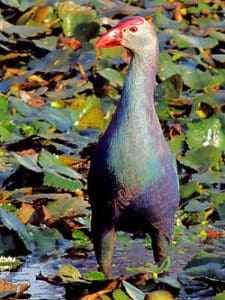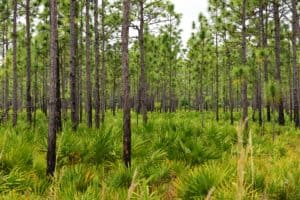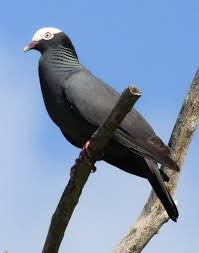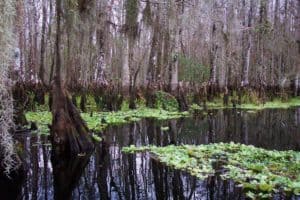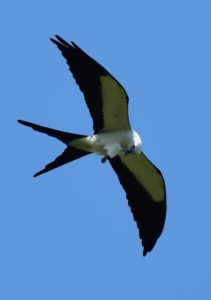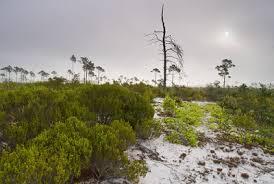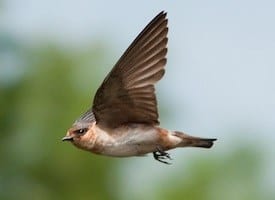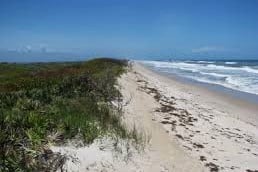SOUTH FLORIDA SPECIALTIES
Florida spring bird watching offers many advantages. Many birds found in the Caribbean and subtropical regions can be found in isolated populations in Florida. These restricted range species will be our targets for this Florida Specialties Tour! This time of year the breeders have already established territories and in some cases, nests. They are in their finest plumage and singing. The mild climate, mid 70’s and sunny skies, provide a nice thawing out from the winter cold.
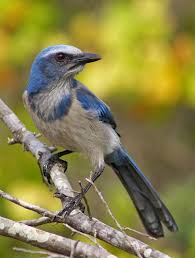
Florida Scrub Jay
Bring your camera as the boardwalks, swamps and wetlands will provide fantastic opportunities for up-close viewing of waders and other terrific birds. There is nothing like seeing a Wood Stork landing in the mangrove just 10 feet from you! Birding the hardwood hammocks and pine flatwoods should provide a stunning list of late wintering and early migrants including warblers and vireos. There is usually at least one special out of place bird in this area that we will try to find. And finally, we’ll also keep an eye to the sky for Eagles, Hawks and Frigatebirds.
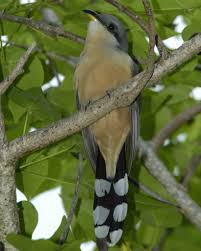
Mangrove Cuckoo
Plan on visiting a stunning list of premier birding destinations on our trip. The first, Merritt Island National Wildlife Refuge, is contained within a 35 mile long barrier island right along the Atlantic Flyway. Many birds call this area home both throughout the year and as a wintering ground. The Canaveral National Seashore is also part of this amazing ecosystem. The shore will provide miles of quiet sandy beaches and a healty dune to look out to sea. Both were established as a buffer zone to the John F. Kennedy Space Center. This region is also home to one of three larger populations of the Florida Scrub-Jay. We will spend a whole day exploring this phenomenal habitat.
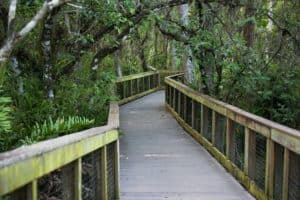
We should expect to identify 180-200 bird species on this trip. With the great spring weather, easy terrain, moderately paced days and good accommodations, this trip is a must for every birder and photographer.
ITINERARY
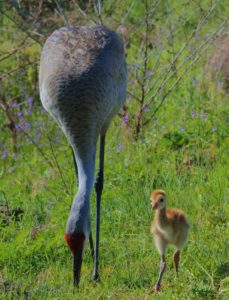
Sandhill Cranes
DAY 1 – Orlando to Lake Apopka Wetlands
Noon pickup from the Orlando International Airport (MCO). Staying in the Orlando area, we will take a drive around the Lake Apopka Wildlife Drive for some whistling ducks and other goodies. This diamond in the rough features flooded fields, lake edge, and ponds of various depths. Our time here will get our trip off to a great start. Target here include Black-bellied and Fulvous Whistling Ducks, and just about any water bird found in Florida.
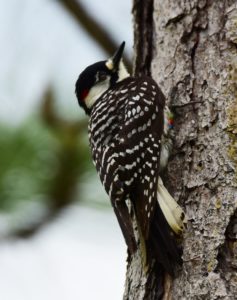
Red-cockaded Woodpecker
DAY 2 – Pine Flatwoods
Our big day starts by heading south into the heart of the Lake Wales Ridge. The sandy soil provides excellent habitat for the beautiful pine flatwoods of central Florida. This fire dependent habitat is home to Red-cockaded Woodpecker, Bachman’s Sparrow, and Brown-headed Nuthatch. Crested Caracara should be sitting in fields along the way today. Joe Overstreet landing gives another chance for Snail Kites and other specialties in the area. The day ends near Merritt Island where we start the next morning.
DAY 3 – Merritt Island and Canaveral National Seashore
Merritt Island National Wildlife Refuge and Canaveral National Seashore provide miles and miles of outstanding birding. We will spend the morning exploring this rich habitat by birding the Black Point Wildlife Drive, Indian River Lagoon, Florida Scrub, and Playalinda Beach. Our targets include Florida Scrub-Jay, King and Clapper Rails, Sedge
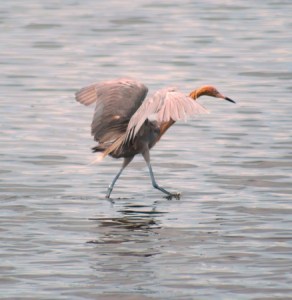
Reddish Egret
Wren, Reddish Egret, Roseate Spoonbill, and Swamp Sparrow. After our drive south, our evening birding destination is at the Wakodahatchee Wetlands.
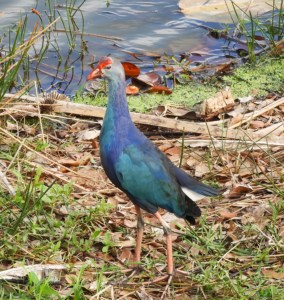
Gray-headed Swamphen
This is an excellent spot to take photos up close of nesting birds. Wood Storks, Anhingas, herons, egrets, and Gray-headed Swamphens won’t disappoint. Overnight in Lantana.
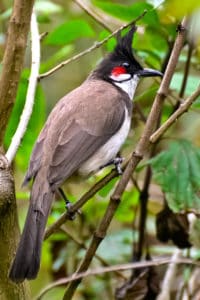
Red-whiskered Bulbul
Day 4, 5 and 6 – The Southeast coast and northern Keys
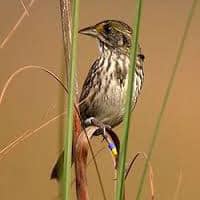
DAY 7 – Fill in the trip list
We have several options this day. First choice, chase a rare bird somewhere in the central or southern part of the state. Some of the birds that have shown up during the spring over the last several years are Zenaida Dove, Eurasian Wigeon, White-cheeked Pintail, Common Eider, American Flamingo, Key West Quail-Dove, Thick-billed Vireo, Black-faced Grassquit, Purple Sandpiper, La Sagra’s, and Fork-tailed Flycatcher. Second option, bird our way up the gulf coast as we head towards Orlando. No worries, we’ll have plenty of really great birding spots to explore.
DAY 8 – back to Orlando
Return to the Orlando International Airport by noon for your flight home.
TOUR DETAILS
DATES: March 30 to April 6, 2025 (booking now)
DURATION: 8 days/7 nights
COST: $2995
INCLUDES: airport pick-up/drop off, all Florida transportation, all meals, park fees, 8 days and 7 hotel nights plus expert guide
ARRIVAL/DEPARTURE: Orlando International Airport (MCO)
DIFFICULTY: moderately easy
EXPERIENCE: All levels welcome
FOCUS: birding, photography
SOLO SUPPLEMENT: $600
DEPOSIT: $1,000
FINAL PAYMENT: Due 90 days out
GROUP SIZE: 3-7 people (plus 1 guide, Sue Riffe)
EXPECTED BIRDS: 180-200 species
TARGET BIRDS
- Florida Scrub Jay (endemic)
- Bachman’s Sparrow
- Black-whiskered Vireo
- Bronzed Cowbird
- Cave Swallow
- Common Myna
- Crested Caracara
- Egyptian Goose
- Gray Kingbird
- Grey-headed Swamphen
- Limpkin
- Mangrove Cuckoo
- Monk Parakeet
- Purple Gallinule
- Red-cockaded Woodpecker
- Red-whiskered Bulbul
- Seaside Sparrow “Cape Sable” (endemic)
- Shorebirds 20+ species
- Short-tailed Hawk
- Snail Kite
- Spot-breasted Oriole
- White-crowned Pigeon
- Wood Stork
- White-winged Parakeet
- Rarities currently around
- Plus many more!


